26 life-saving kitchen cleaning hacks to spruce your space in double-time
These kitchen cleaning hacks promise to make housework easy and super fast. Tackle a grimy sink, small appliances and more in double-time with these tips
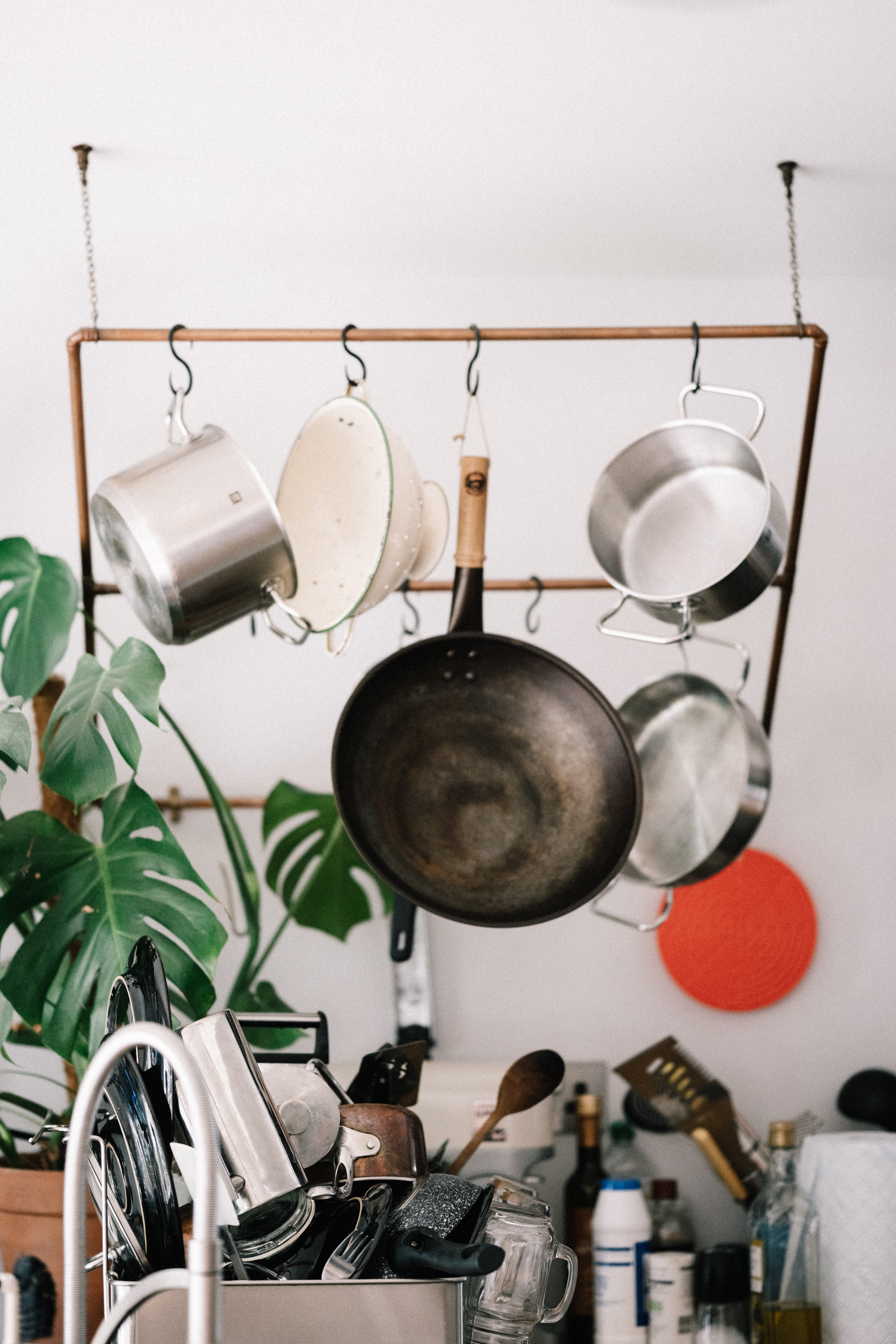

Depending on how much of a clean fiend you are, tackling the kitchen could be your idea of heaven, or hell. However, with these kitchen cleaning hacks in hand, scrubbing everything from the fridge, oven and dishwasher to the sink, cutlery and not to mention small appliances, needn't be a long and arduous task.
In our experience, the best trick when you clean a kitchen from top to bottom is to take the products you use back to basics and to define a schedule that will help streamline (and quicken) all the processes. That way, you can clean your space as efficiently as possible. To make life even simpler – and cleaning more interesting (you'll get it later) we've included some of our favorite hacks from cleaning Queens: Lynsey Crombie and Mrs Hinch who know a thing or too about speedy sprucing...
What is the fastest way to clean a dirty kitchen?
The trick is to prepare yourself with all the ingredients and equipment you'll need. Scroll for individual areas and grab what is required before you start. If you need to clean the whole space, begin at the door working left to right and cleaning from top to bottom so that the last thing you clean is your kitchen floor.
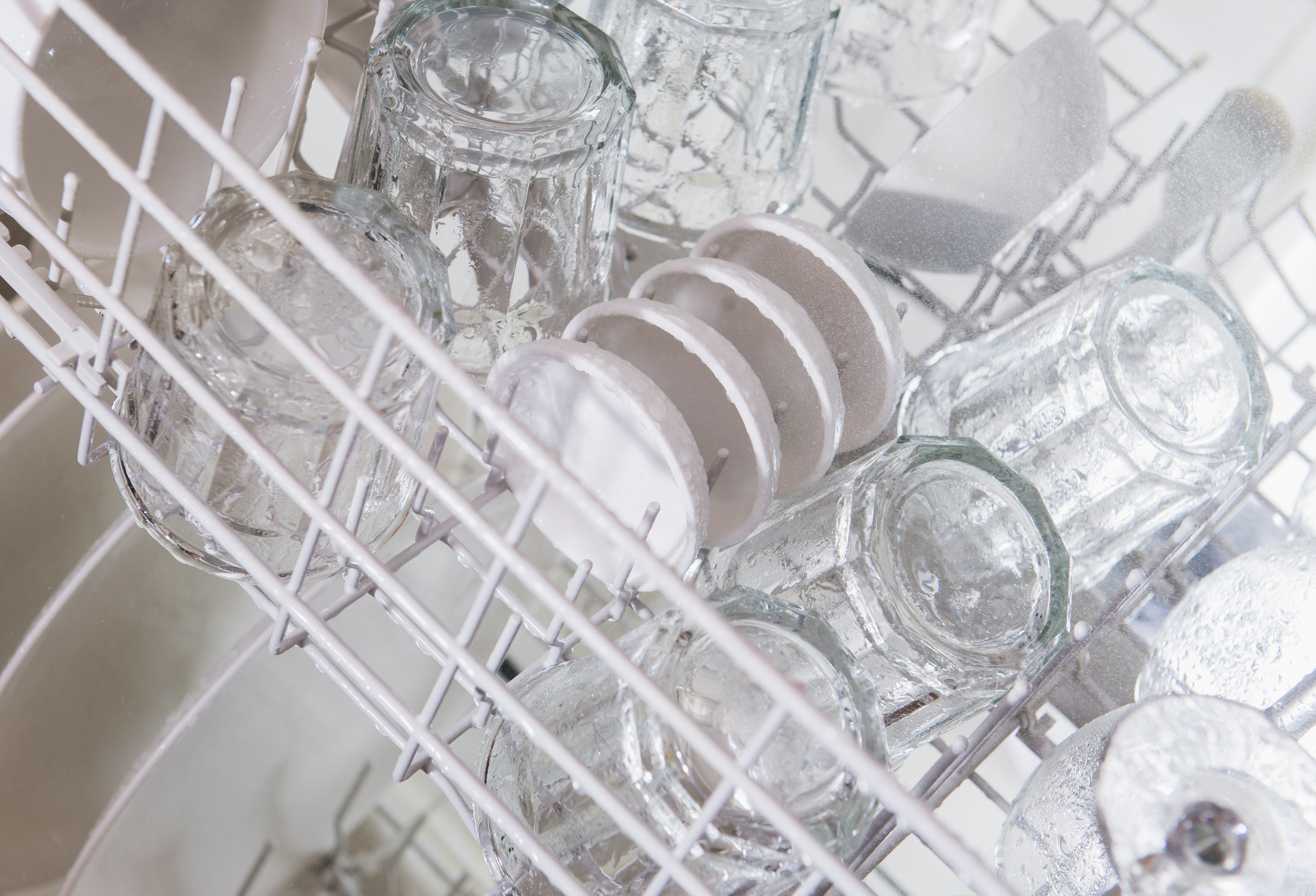
1. Clean cloudy glasses with vinegar
If you live in hard water area and especially if you put your glasses through the dishwasher, it's likely the glass has gone a little cloudy, which isn't the most appetising look when you're serving a glass of something crisp to guests.
But you can easily remove the deposits by cleaning with vinegar. Simply soak the glasses in white vinegar for five minutes. Then rinse and dry with a lint-free cloth. Sorted.
2. Clean a wooden chopping board with lemon and salt
Is your wooden chopping board stained and a little, well, smelly? You can't put it in the dishwasher like you can plastic or glass ones, but you can clean it with a lemon. Yup, simply halve one and run the cut face over the surface of a board.
Not quite doing the job? Sprinkle the board with salt or bicarbonate of soda first and use them lemon again. Then rinse and allow to dry.
Get small space home decor ideas, celeb inspiration, DIY tips and more, straight to your inbox!
You should also aim to re-oil your wooden chopping boards regularly (aim for four times a year) to keep them in good condition.
- Discover more baking soda cleaning tips.
3. Clean a toaster with a paint brush
If your toaster's insides are full of crumbs which then burn every time you make toast, unplug it, take it outside, turn it upside down and give it a gentle shake. If there are crumbs still lodged inside, use a small paint brush or a pastry brush to get them out. Remove and clean the tray, wipe down the outside of the toaster with a damp cloth and you're good to go.
- To learn how to clean a toaster completely check out our advice page.

4. How to quickly descale a kettle
If you live in a hard water area, it's likely that limescale builds up inside your kettle and the deposits end up in your tea or coffee. Aside from this, the presence of limescale also makes the heating of the kettle annoyingly loud and shortens its life.
The best approach is to clean a kettle's interior every couple of months. Scrubbing is a real 'no' because doing so can damage its lining. So, either rely on a store-bought de-scaler, following the instructions to the letter, or fill the kettle with equal parts of water and household vinegar or lemon juice and leave to soak for an hour before boiling the kettle. Empty it, rinse thoroughly. Fill and re-boil. Empty and rinse, and you're done.
- Learn more on how to descale a kettle quickly.
5. Clean wax from candle holders with hot water
Don't you just love it when someone buys you a scented candle? But don't you just hate it when you've burnt it down to be left with a pretty but useless glass container with a wedge of wax at the bottom? Or maybe your favorite glass candlesticks are covered in waxy drips?
The solution is easy: submerge the glass in very hot water and scoop or wipe off the melting wax, depositing it in the bin. Then, simply soak the glass in a mixture of half hot water, half vinegar to bring back the shine. Rinse and allow to dry.
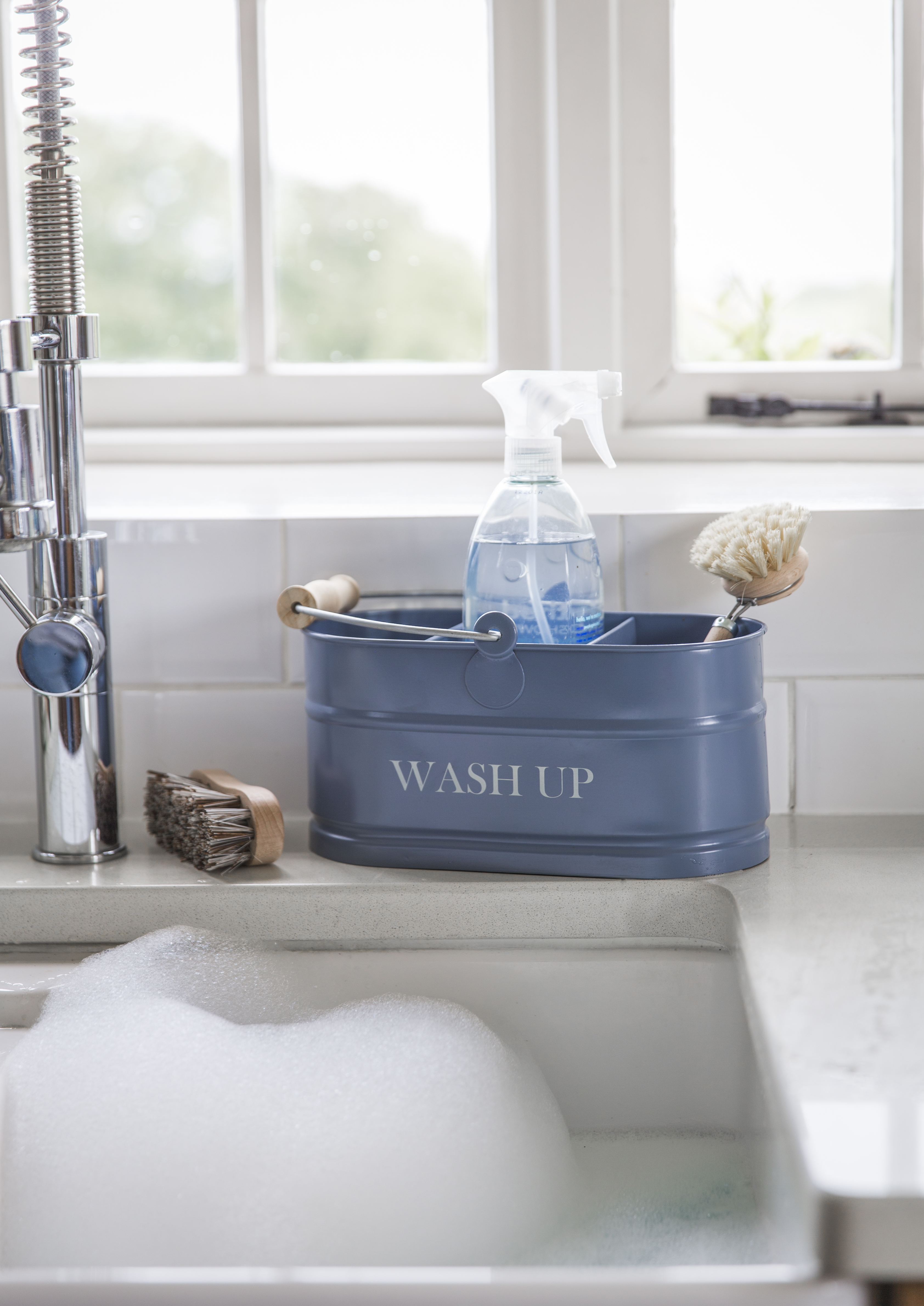
6. Remove tea and coffee stains from mugs and teapots
We don't know about you but we find it hard to enjoy a cup of tea or coffee from a stained mug or teapot. You could, of course, soak yours with a solution of bleach and warm water, but for a more natural approach, squirt in some washing up liquid, add some bicarbonate of soda and scrub with a rough sponge. Rinse and allow to dry.
7. Clean a blender in seconds
Want an easy way to clean your very best blender. No worries, simply put two or three cups of hot, soapy water into it, run it for a minute; empty, then rinse. The insides, including the sharp bits, should be sparkling clean.
8. Get baked on food off pans and trays
There's a number of ways to do this. Our favorite is to fill the pans and trays with salted water and to allow them to soak for a few hours, and then bring to the boil (trays can go in a hot oven). Allow to cool, then give them a quick scrub with a rough sponge. Rinse and they should be as good as new.
Another way is to soak tumble dryer sheets in water in the pans and trays, leave for a couple of hours to remove baked-on food then rinse.
- Burnt-on food on cast-iron? This is how to clean a cast-iron skillet like a pro.

9. Remove scratches from plates and bowls
Metal knives and forks inevitably leave scratches on white crockery, but you can remove those marks easily with Barkeeper's Friend. We prefer the paste – you simply squirt some on, scrub with a rough sponge and rinse... and you're left with a shiny, scratch-free result.
10. Best ways to clean a toasted sandwich maker
If you love a toastie but hate cleaning your best sandwich toaster, the following hack is for you: as soon as your sandwich is on the plate, unplug the sandwich maker, wipe it down with a damp cloth while it's still hot (being careful, obviously), then wipe it over again with kitchen roll.
This will remove crumbs, oil and gunk. Now dampen a couple of dishcloths in hot soapy water and drape them over the two plates (this is assuming that your sandwich maker's plates aren't removable for washing or that you'd really rather not remove and wash them).
By now your sandwich will have cooled down enough to eat. Once you've finished eating, use the cloths to wipe the plates again, rubbing at any baked on food (cheese, we're talking about you). Food stuck in the grooves? Wrap one of the soapy dishcloths around a toothpick or chopstick to remove it. Use a fresh, damp cloth to wipe any soapy water away.
11. Know how to clean kitchen worktops
The best course of action is, of course, to clean up as you go, especially if you have split caustic substances, such as lemon juice, vinegar or alcohol, or those that stain, such as tea and coffee. Some worktop types are tougher than others; others will last well only with good maintenance.
Wooden worktops particularly suffer if they get wet constantly, so ensuring you dry them around the sink and drainer area in particular will keep them looking like new. Otherwise, wipe them down after use with hot, soapy water, use an all-purpose kitchen cleaner with added disinfectant to see off germs, dry with kitchen roll. You can remove stains with a little vinegar or lemon, but avoid tough cleaning solutions. Or use the lemon/salt combo we suggested for cleaning chopping boards (above). Re-oil your worktops regularly (aim for four times a year) to keep them in good condition.
Stainless steel worktops get covered in fingermarks and light scratches. Use our trick with Barkeeper's Friend (see above) to remove scratches. For cutting down on finger marks, a dab of cooking oil rubbed across the whole of the worktop with a clean, lint-free cloth will do the job. Otherwise, warm soapy water, rinsed off and dried will make your worktops shine.
Stone and manmade worktops, whether granite or Corian, composite or laminate can simply be wiped down with hot, soapy water or an all-purpose kitchen cleaner with added disinfectant. Buff dry with a clean cloth or kitchen roll. Barkeeper's Friend will remove stains but always check with your worktop's manufacturer before using any strong kitchen cleaner on your worktop.
12. Clean the oven fast and without chemicals
We don't tend to encourage using a self-cleaning function when cleaning an oven properly. So if you really are stuck for time, the simplest way to clean the inside of your oven is with bicarbonate of soda. Mix it with water to make a paste then spread over burnt on food and grease.
Let it sit, then use a kitchen spatula to scrape off the paste (do it into a baking tray placed over an old tea towel on the floor or just below the oven). You might need to wet the oven (a spray bottle is handy for this) to loosen the paste. Rinse thoroughly with a damp cloth. Leave the door open while the oven dries out.
13. Clean dirty gas burners in a plastic bag
Yuk. They never look quite as good as they did when you first bought the oven, right? It only takes a couple of spills and your burners are greasy and gunky forever after.
Instead, put the burners into plastic bags that you can seal (big freezer bags will do); add about four tablespoons of ammonia, seal, place the bag of burners on a baking tray and put them outside (far from where pets or kids can reach them). Don't worry if the burners aren't sitting in the ammonia; it's the fumes that do the job.
The following day (or that night if you started the job in the morning), carefully empty the bag (you'll need rubber gloves), run the burners under a warm tap and put into a bowl of hot soapy water. Rinse and leave to dry.
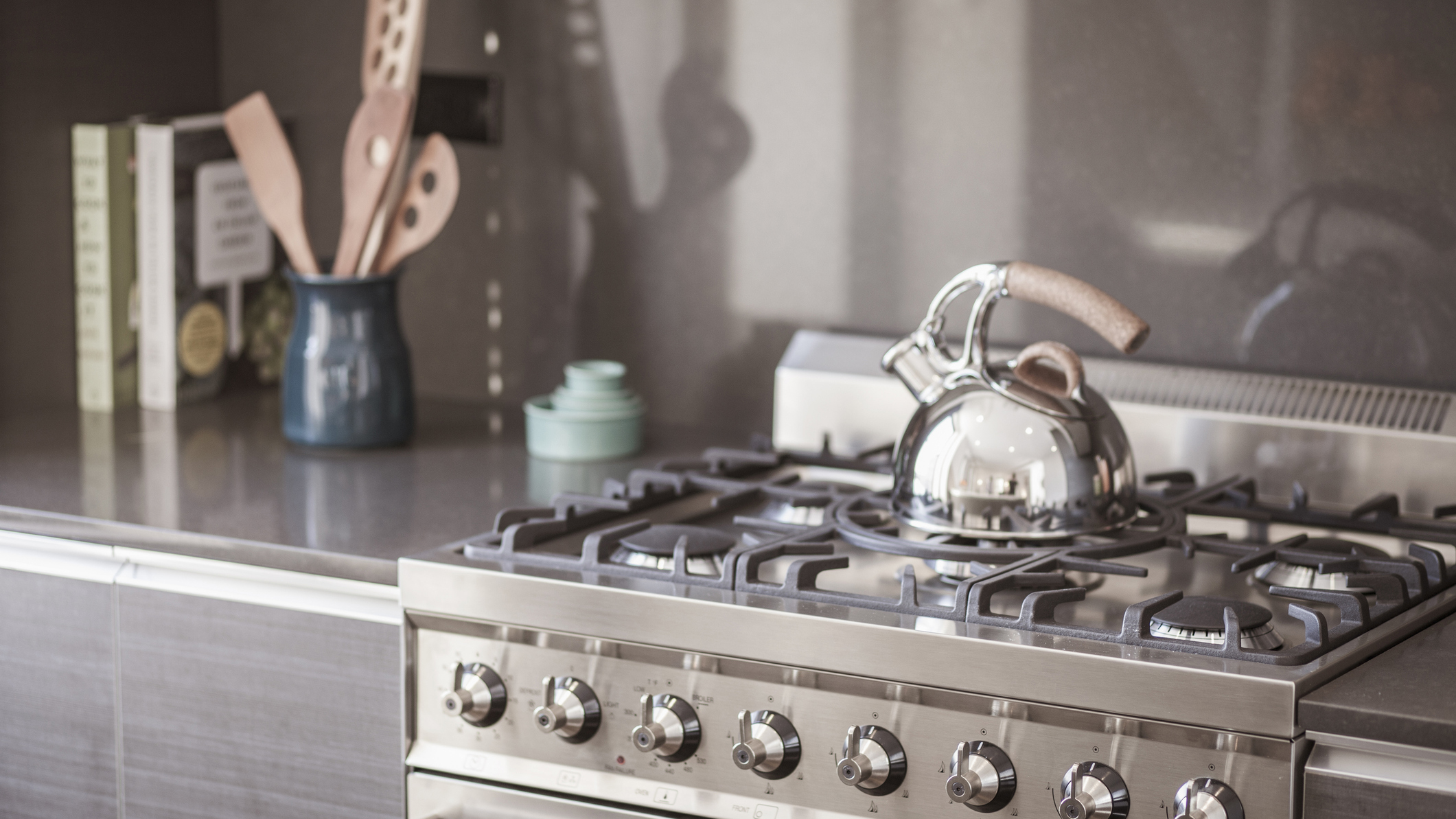
14. Steam clean the microwave with lemon
Microwave oven interiors get covered in baked on food splatters. And for the amount we use them it's surprising how not everyone knows how to clean a microwave properly... The best course of action (obvs) is to wipe the inside of yours every time you've used it, and to invest in a microwave food cover, which will be easy to pop in the dishwasher.
But failing that... cut up a couple of lemons, stick them in a bowl of hot water and zap them on high for three or four minutes until they produce a lemony steam. Leave the door shut for the entire time, then repeat the zapping. Leave to sit again, then open up the door and simply wipe off the loosened food.
You might need soapy water here to clean up any extra grease, then rinse and allow to dry with the door open. Bonus? Your kitchen will smell pleasingly lemony, too.
15. Clean a fridge quickly
There are plenty of neat tricks on how to clean a fridge efficiently, but here's our favorite: whip out the shelves and drawers, spray the fridge's interior with a solution of distilled vinegar and water, leave it to soak while you wash the shelves then return to the fridge and wipe it out thoroughly with a soft, damp cloth (rinse and squeeze it out regularly). The vinegar and water will remove not just sticky mess and germs, but fridge smells, too. Let the fridge dry thoroughly before you put the food back in and shut the door.
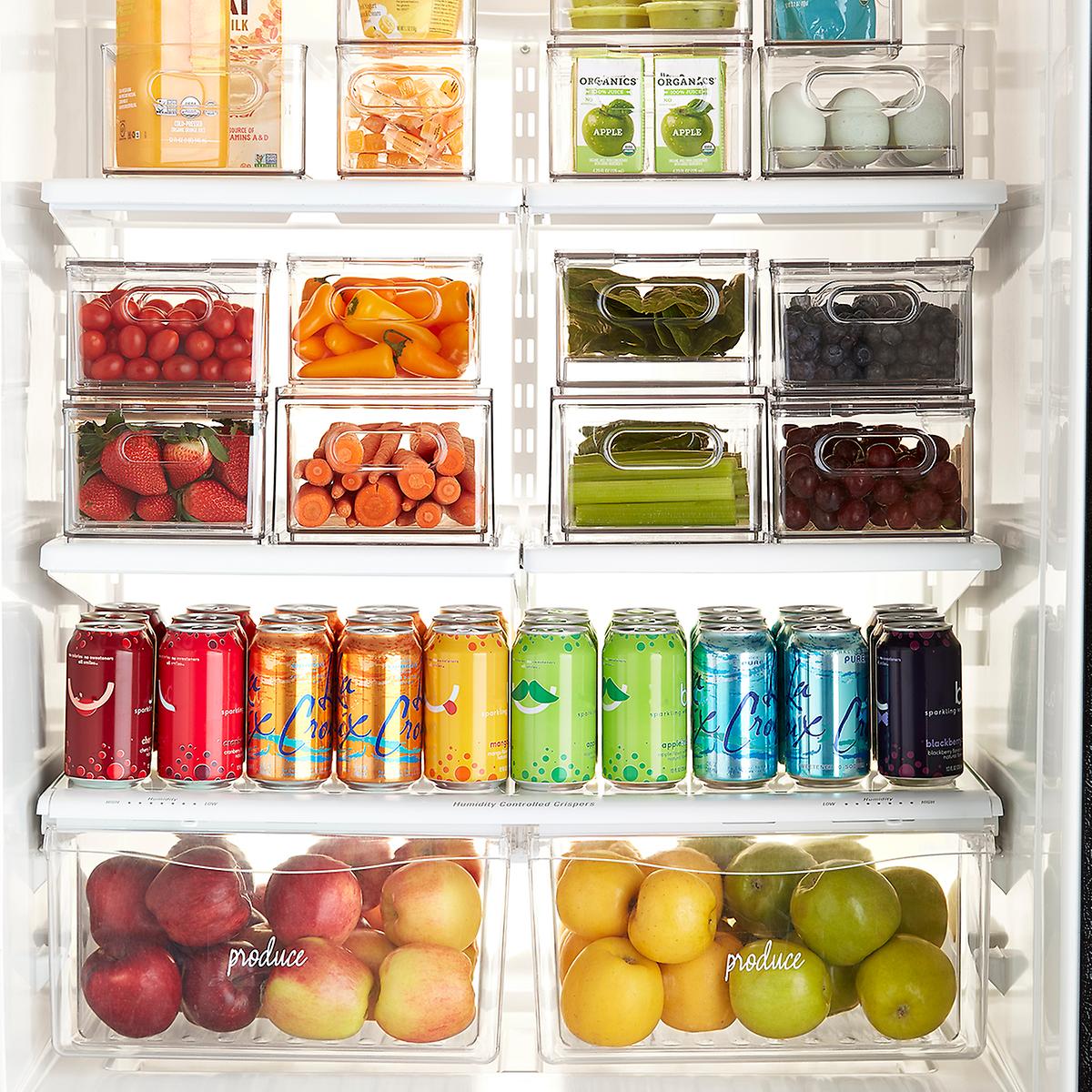
16. Clean a dishwasher with vinegar
The inside of the dishwasher is the gunkiest area. Simply placing around 250ml of white vinegar in a dishwasher-safe container (an upright cup will do) on the top rack or pouring it into the bottom of the dishwasher, then setting the temperature on a full, hot cycle will disinfect and shine everything, wash away grease and grime, and remove any odours. Use your dish drainer while this hack is working its magic.
- For a complete guide on how to clean a dishwasher we can help.
17. Clean cutlery with potatos and bananas
Possibly one of our favorite kitchen cleaning hacks for its eco-friendly vibe too, Lynsey Crombie who is a big fan of using natural ingredients suggests, "For cutlery you can use potato peel to remove water marks. You can also use a banana skin... It’s about thinking outside the box, and making the most of what you’ve got.'
18. Clean a stainless steel sink with bicarbonate of soda
If you need to clean a stainless steel sink because it's dirty beyond belief, then you can clean it quickly with bicarbonate of soda. Simply sprinkle it on, scrub with a toothbrush, then wet and rinse. You can use Barkeeper's Friend to get scratches out; just follow our tips above for taking scratches off of plates and bowls.
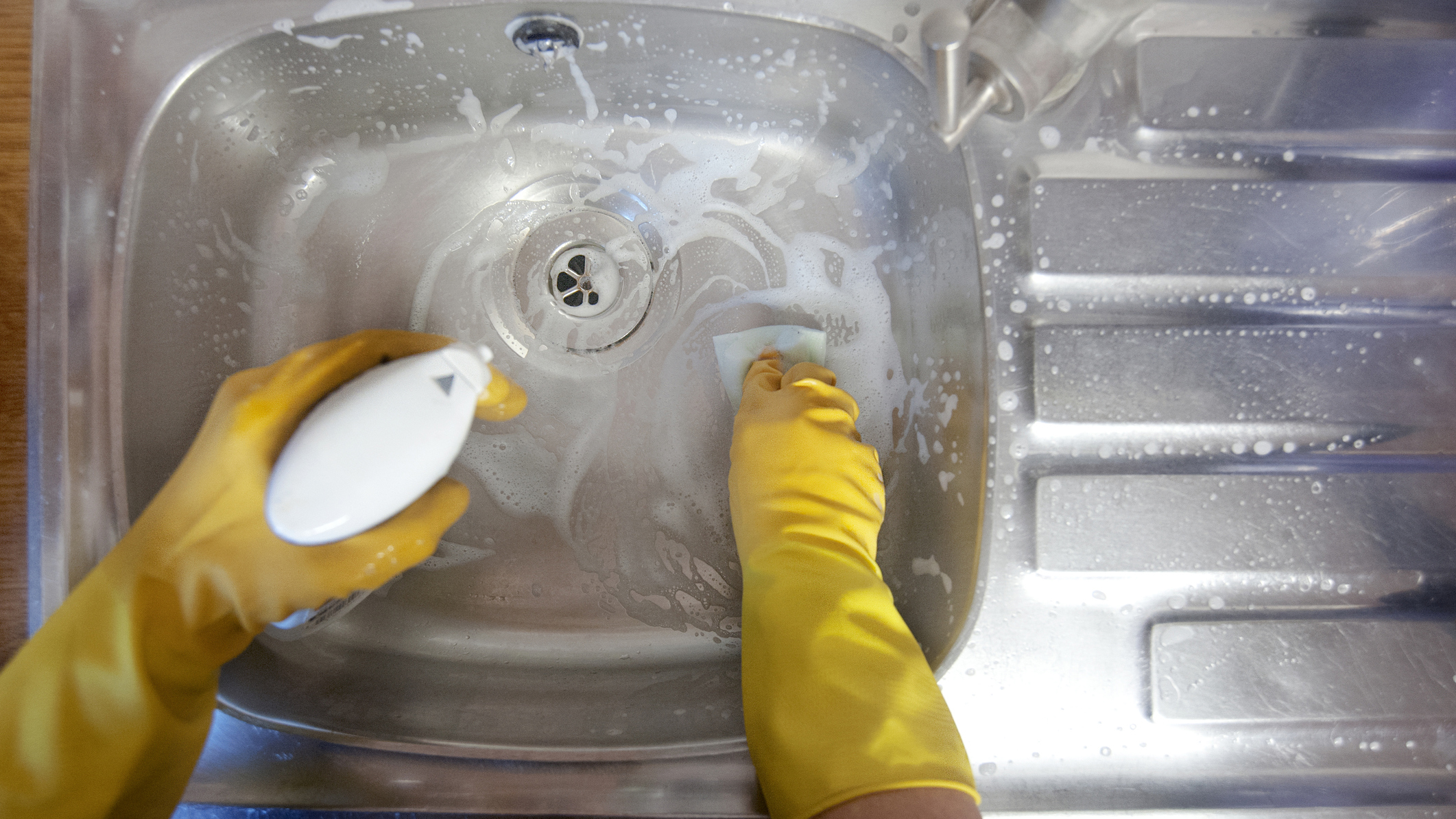
19. Clear a blocked kitchen sink
If your kitchen sink is slow to drain, pour half a cup of bicarbonate of soda down it, followed by half a cup of vinegar. Cover with a wet cloth, wait five minutes then pour boiling water down it. This is one of the best tips on how to unblock a sink in both the kitchen or the bathroom for that matter. It will do the trick!
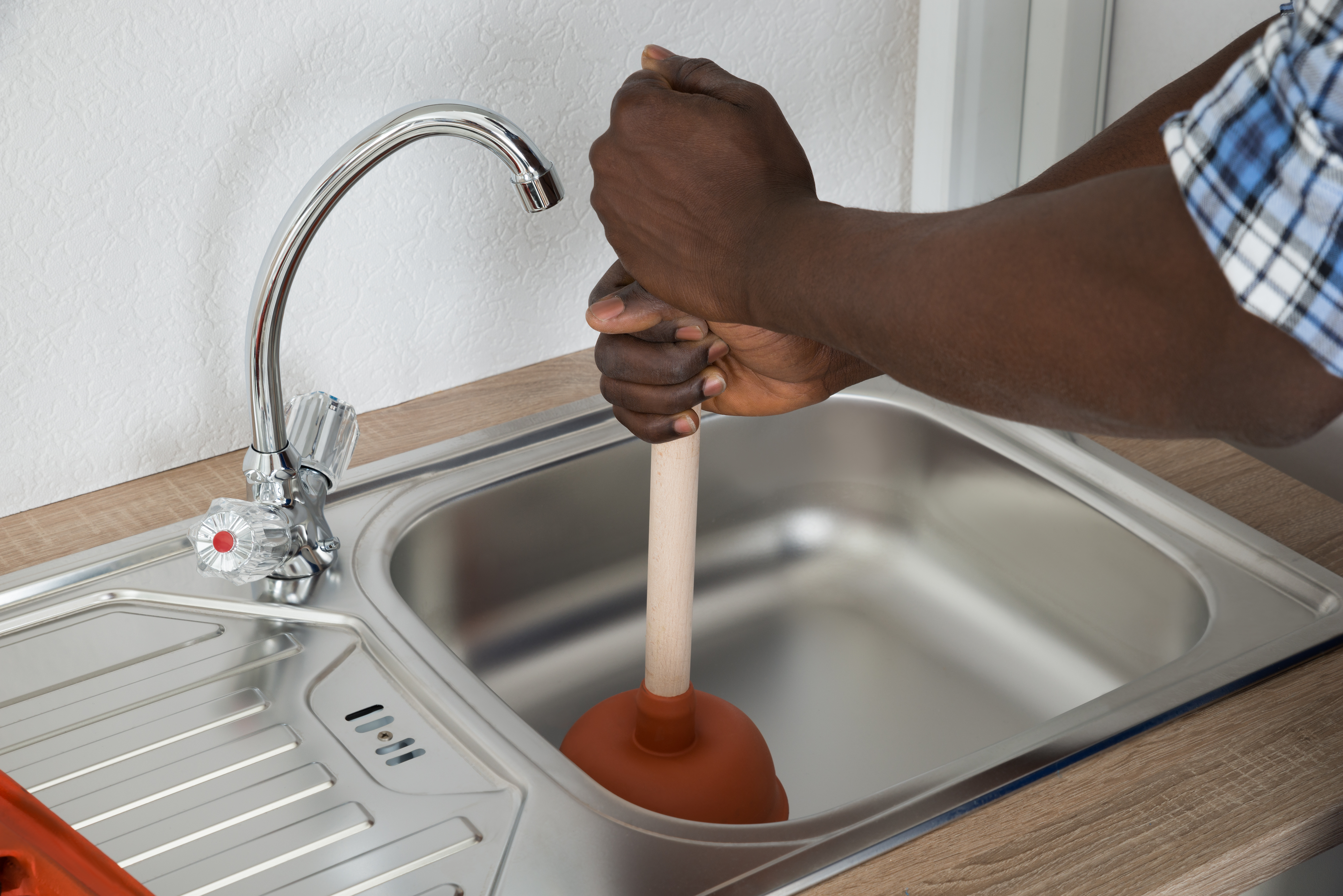
20. Use distilled white vinegar in your washing machine
Washing machines can't do their job well if they're not squeaky clean. And while it might not have occurred to you to learn how to clean a washing machine properly, doing so every few weeks will keep it in good condition, extend its life and ensure your wash comes out bright and clean.
Simply setting an empty machine to a hot (60ºC) wash, pouring 230ml of white vinegar directly into the drum, and running the programme will do the job, seeing off dirty, limescale, germs and mould and mildew.
21. Clean kitchen floors fast
Even the best kitchen flooring takes the biggest pounding when it comes to spills and thrills. So, having a good cleaning routine is a must.
Regularly vacuuming up crumbs will keep household pests at bay. Then, we'd recommend a good mopping with an appropriate floor cleaning solution. Your floor type will dictate what you use for cleaning.
- Use our guide to cleaning hardwood floors to find the right approach for preserving the good looks of wooden floors.
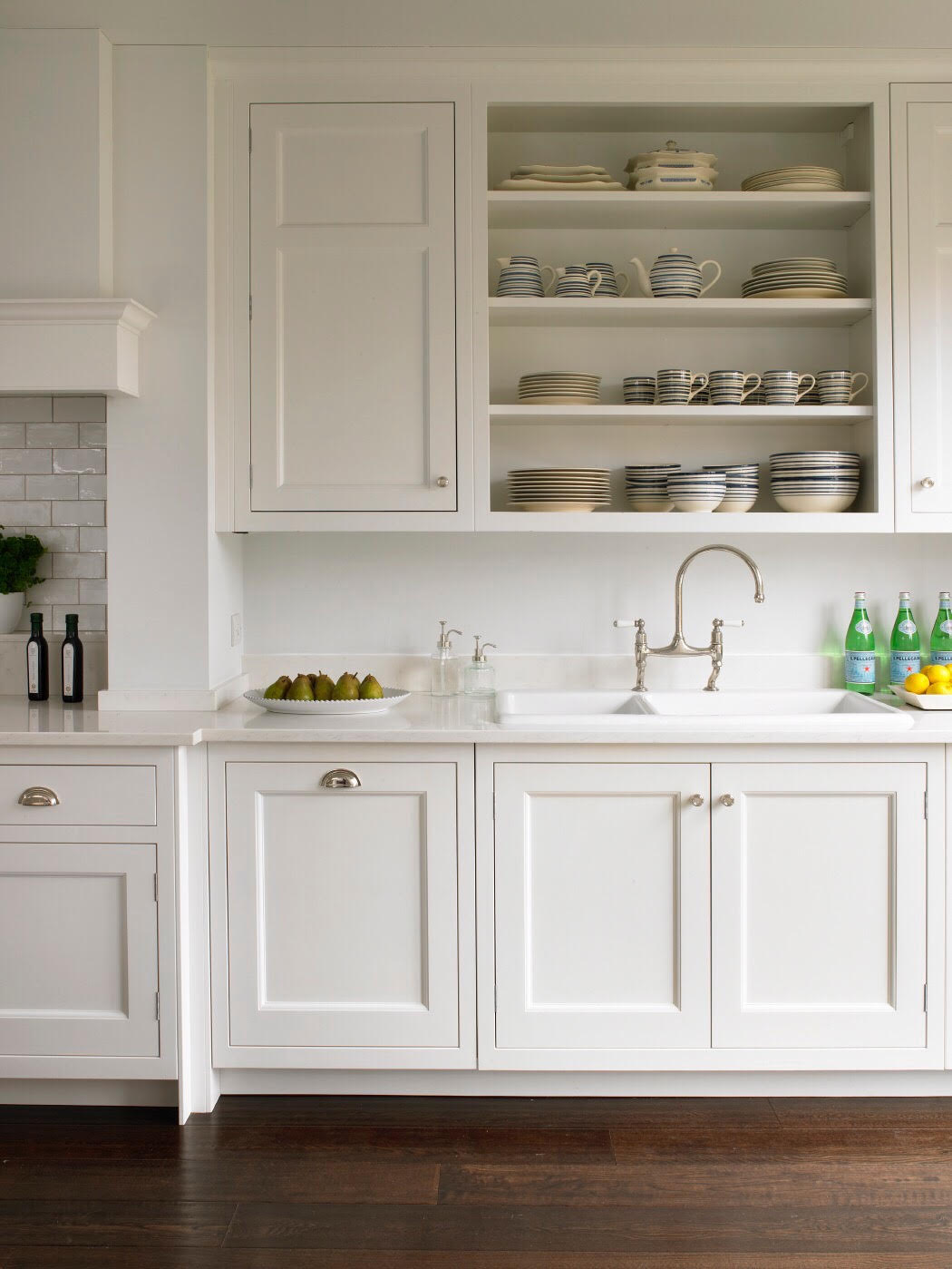
22. How to clean knobs and handles and switches
Knobs, handles and switches in kitchen are undoubtedly the most germ-ridden hot spots in your home. But how often do you clean yours?
Wiping them over once a week with a wet cloth dipped in a cleaning product with added disinfectant is a good move – but it's also good practice to wipe anything you've touched every time, if you're working with raw meat or veg. A disinfectant spray, such as Dettol all in one spray, is a good buy – or see our cleaning hacks using Zoflora for tips.
Want a chemical-free approach? e-cloth’s Home Starter Kit has all you need to make the switch to quick and convenient chemical-free cleaning and remove dirt and bacteria with just a wipe and water.
23. Quickly clean greasy kitchen windows
Best way for a streak-free shine? If you know how to clean windows and if yours are given a regular wipe over so they aren't hideously dirty, you can simply use a damp microfibre cloth to wet them, and a dry cloth (or a series of dry ones) to dry them off and achieve a streak-free finish.
If, however, yours are greasy, take a solution of washing up liquid and warm water to them, applied with an abrasive sponge. Then rinse the windows with clean water; use a squeegee to get any further soapy deposits off; then use the microfibre cloths for a streak-free finish.
24. Clean kitchen blinds with tumble dryer sheets
Another one recommended by none other than Lynsey Crombie Queen of Clean, fresh or used tumble dryer sheets can be used to clean wooden blinds. 'Use scented tumble drier sheets to really lift the dirt and clean those wooden slated blinds. You can even use the tumble drier sheet after you have used it for the laundry.' Amazing, just close the blinds and work across to remove dust and ta-da.
25. Tips to clean a crusty cheese grater
Left your grater out a little too long and looking for easy ways to remove stuck-on cheese? Rather than risk cutting yourself on the sharp edges, or damaging a perfectly good brush or sponge, turn your attention to the trusty lemon.
Renowned for its grease cutting abilities, a lemon is just what you need to loosen stubborn, stuck-on food trapped in a grater's holes, while leaving the stainless steel looking sparkly.
26. Mrs Hinch a stained fridge
If you are sprucing your fridge quickly but noticing stains, Mrs Hinch has a top tip to help them vanish quickly. 'There are often marks at the back of the fridge where labels get stuck or things spill, so I’ll put some Pink Stuff on my Minkeh and scrub them away.'
Ta-da 👌now it's time for a G&T.

Lucy is Global Editor-in-Chief of Homes & Gardens having worked on numerous interiors and property titles. She was founding Editor of Channel 4’s 4Homes magazine, was Associate Editor at Ideal Home, before becoming Editor-in-Chief of Realhomes.com in 2018 then moving to Homes & Gardens in 2021. She has also written for Huffington Post, AOL, UKTV, MSN, House Beautiful, Good Homes, and many women’s titles. Find her writing about everything from buying and selling property, self build, DIY, design and consumer issues to gardening.